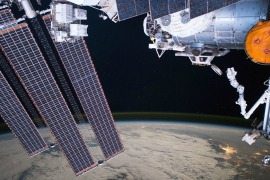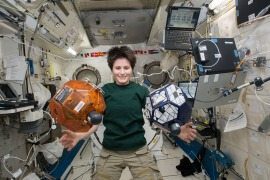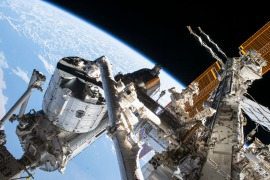
Once the stuff of sci-fi stories and dreamers’ imaginations, space exploration is not only a reality but is more publicly accessible than ever.
Brian Talbot, marketing and communications director for the Center for the Advancement of Science in Space, said there are more opportunities to be involved in space than many people realize. He will be on hand at Saturday’s K-12 STEM Symposium to answer questions about CASIS and how STEM programs can connect with space.
CASIS has managed the U.S. national laboratory portion of the International Space Station since 2011. The U.S. portion of the station was designated a national laboratory in 2005, and in 2010 with the NASA Authorization Act, Congress outlined a desire for a nonprofit to manage the national laboratory component and connect commercial, academic and other government agencies who might want to use the space station’s unique resources in orbit for innovative research and development.

CASIS was chosen by NASA, and in 2011, CASIS started operations with the sole focus of using the ISS and making use of the space station for a whole host of users — including STEM programs.
Zero Robotics allows students on Earth to put their coding skills to work and program robots used on the space station. Story Time From Space points the camera at astronauts who read books and conduct fun science demonstrations to explain the phenomenon of microgravity. The Tomatosphere program sends seeds to the space station for a period of time then returns them to classrooms around the country for students to compare and contrast with seeds that have remained on Earth.
There are also opportunities for students to connect with the space by sending their own research projects to the ISS.
“This never existed when most of us were growing up — this unique opportunity now for students to have authentic experiences with space,” Talbot said. “You’re not just observing now; you can actually be a participant in the research.”

CASIS receives hundreds of requests to do space station research each year. A panel of internal and external experts selects the projects that go into space based on several criteria including its benefit to humanity, feasibility and need to do the research in space rather than on Earth.
“Our mission is to make the best use of the space station, so it’s very important that any projects that are proposed have a strong benefit to the world and are making the best use of the astronaut crew time,” Talbot said.

CASIS also works to reach out to various corporate, government and academic entities.
“We’re out there trying to connect new people to space who may not have ever known that space was even available for them,” Talbot said. “We have a business development team that reaches out to companies, and a good amount of our work is in that outreach. From innovative medicine to remote sensing and technology development, there are a great array of opportunities for companies to be involved right now in their own research in space.”

